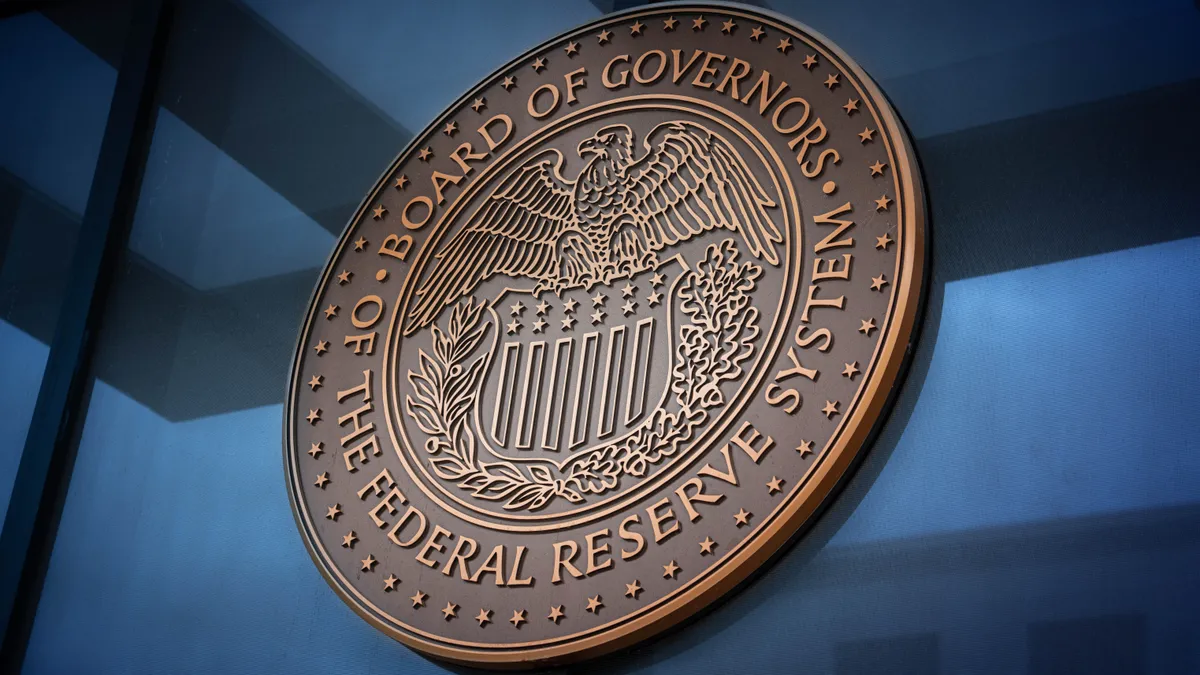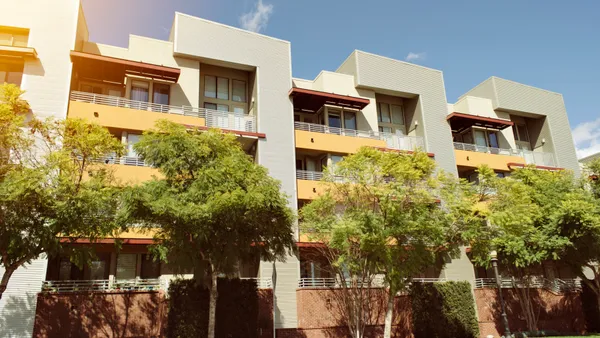Dive Brief:
- Last week, the Federal Reserve held the benchmark interest rate steady at a 22-year high while keeping the door open to a future rate hike.
- The Fed for the second consecutive meeting left the federal funds rate unchanged at a range between 5.25% and 5.5%. Several policymakers have recently noted that a surge in U.S. Treasury yields since September may ease price pressures in the coming weeks by slowing robust hiring and economic growth.
- The day after the Fed’s announcement, the 10-year Treasury — an important benchmark for multifamily lending — fell to 4.62% after hitting a 16-year high of 5.02% on Oct. 23. At the beginning of the year, it was 3.74%.
Dive Insight:
Fed Chair Jerome Powell said during a press conference that policymakers have made progress in easing price pressures but have more work to do before hitting their 2% inflation target.
“We are committed to achieving a stance of monetary policy that is sufficiently restrictive to bring inflation down to 2% over time, and we’re not confident yet that we have achieved such a stance,” he said.
Still, policymakers acknowledged that “tighter financial and credit conditions for households and businesses are likely to weigh on economic activity, hiring and inflation,” the Fed Board of Governors said in a statement last week. “The extent of these effects remains uncertain,” they said after the unanimous policy decision.
Bank health is a key part of the lending mix. Regional banks are facing more scrutiny after high-profile failures earlier this year. Despite some tightening, most are still open for business. “There’s a common misconception that every bank is closed, which is not true,” Matt Swerdlow, senior director of capital services for New York City-based real estate services firm Ariel Property Advisors, told Multifamily Dive.
Multifamily impact
Many don’t expect the rate pause to cause major changes in the commercial real estate sales environment. “For CRE investors waiting to buy or sell properties, a rate hike pause may not be enough to encourage their re-entry into the market as investors expect further cap rate expansion in 2024,” said Spencer Gray, CEO of Indianapolis syndicator and multifamily owner and operator Gray Capital.
Gray said confidence in longer-term asset performance has led to greater multifamily investment specifically compared to other CRE sectors, but overall investment volume is lower than pre-pandemic averages.
However, others think the rate pause could spark transactional activity. “High rates — with the possibility of further increases — have made underwriting into an unknown future quite challenging,” said Karlin Conklin, co-president and chief operating officer of Los Angeles-based real estate sponsor Investors Management Group. “When the Fed signals the worst is behind us and rates start falling, investor options for refinancing or selling into a stronger market become more compelling.”
Stuart Saft, partner and real estate practice group leader at Florida-based law firm Holland & Knight LLP expects transactions to pick up, but that may not occur this year.
“I think the market will improve in the spring because the interest rate increases are slowing and, most importantly, the market is so soft that there are bargains available,” he said.
CFO Dive Senior Reporter Jim Tyson contributed to this report.
Click here to sign up to receive multifamily and apartment news like this article in your inbox every weekday.











